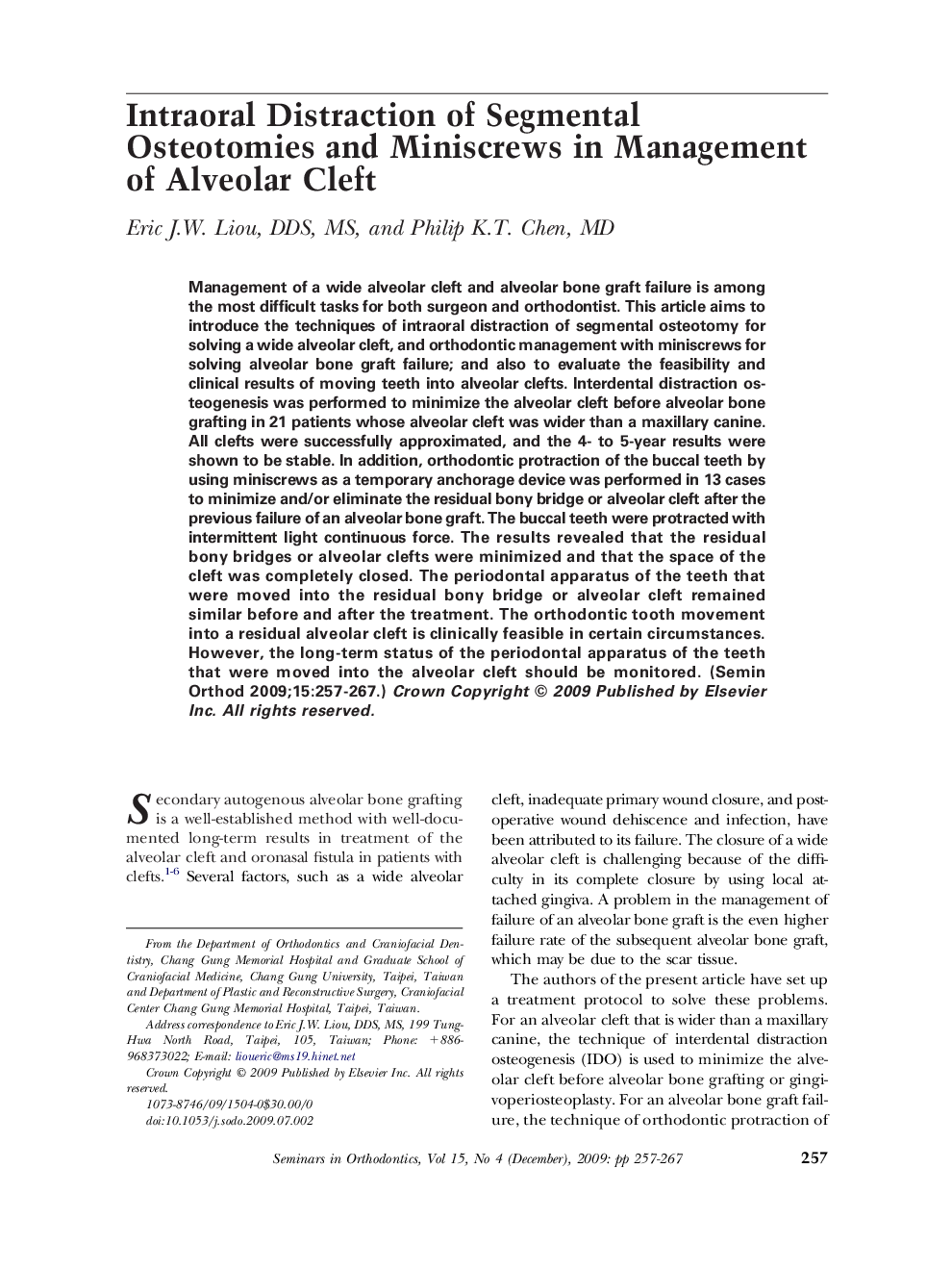| Article ID | Journal | Published Year | Pages | File Type |
|---|---|---|---|---|
| 3175755 | Seminars in Orthodontics | 2009 | 11 Pages |
Management of a wide alveolar cleft and alveolar bone graft failure is among the most difficult tasks for both surgeon and orthodontist. This article aims to introduce the techniques of intraoral distraction of segmental osteotomy for solving a wide alveolar cleft, and orthodontic management with miniscrews for solving alveolar bone graft failure; and also to evaluate the feasibility and clinical results of moving teeth into alveolar clefts. Interdental distraction osteogenesis was performed to minimize the alveolar cleft before alveolar bone grafting in 21 patients whose alveolar cleft was wider than a maxillary canine. All clefts were successfully approximated, and the 4- to 5-year results were shown to be stable. In addition, orthodontic protraction of the buccal teeth by using miniscrews as a temporary anchorage device was performed in 13 cases to minimize and/or eliminate the residual bony bridge or alveolar cleft after the previous failure of an alveolar bone graft. The buccal teeth were protracted with intermittent light continuous force. The results revealed that the residual bony bridges or alveolar clefts were minimized and that the space of the cleft was completely closed. The periodontal apparatus of the teeth that were moved into the residual bony bridge or alveolar cleft remained similar before and after the treatment. The orthodontic tooth movement into a residual alveolar cleft is clinically feasible in certain circumstances. However, the long-term status of the periodontal apparatus of the teeth that were moved into the alveolar cleft should be monitored.
